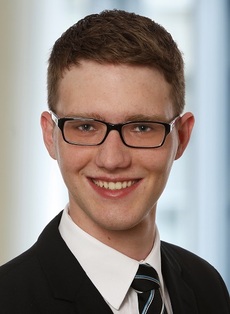Research Area Simulation - S4:Phase field modeling
Simulation studies on curing and fracture processes within FRTS on the basis of the phase-field method
Advisors: Nestler (IAM-CMS), Denniston (UWO), Wilhelm (ITCP)
In order to predict residual stresses and micro-cracks in CoFRTS and DiCoFRTS, the major objective of the second generation in project S4 is the simulative investigation of the curing process on a mesoscopic length scale. On this length scale, the individual fibers are no longer dissolved separately as performed in the first doctoral researcher generation of S4, but are regarded as fiber rovings or bundles, respectively. Taking into account the fiber distribution and fiber orientation fields obtained in project C2, material inhomogeneities and anisotropies can be considered within the rovings. Simulation studies resolving the individual fibers, as performed in the first generation, will be used to quantify the effective material behavior of the rovings. The output of the thermo-micromechanical multiphase-field simulations in form of local stress distributions will be passed on to S3 and C1. An intensive cooperation with C1, S1, S3 and the PostDoc will be enhanced to investigate damage and failure mechanism during the curing process of FRTS continuing the joint work of the first generation. Thereby, the model for crack propagation in multiphase systems [NSSH16, SSHS16] by interfacial strength, and incorporating the material and mechanical parameter anisotropies in regions of the fiber-matrix interfaces, will be extended. Thereby, different mechanical properties of the phases are considered in comprehensive computational studies, including molecular dynamics simulations together with our Canadian partners. Using roving-matrix interfacial strength, which is determined in the project C1, damage and failure mechanism during the curing process of CoFRTS and DiCoFRTS on a mesoscopic length scale will be investigated in collaboration with DSC measurements by Wilhelm.
Figure: Investigation of the curing process of fibre-reinforced thermosets on different length scales: Prediction of residual stresses and fracture behaviour on the meso and micro scale on the basis of the phase-field method. Supplementary investigation of the fiber-sizing-resin interface based on molecular dynamics simulations on the nanoscale.

